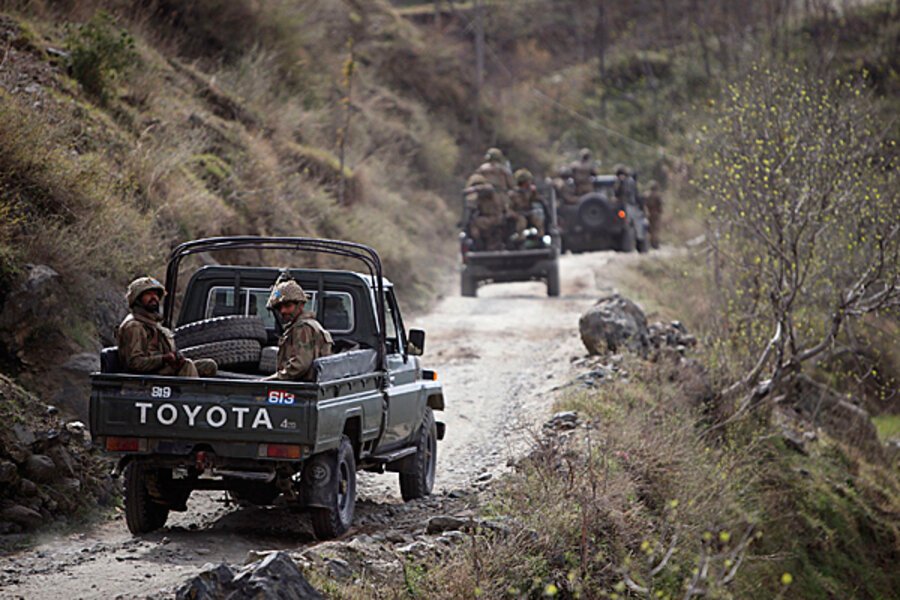The Swat Valley is an administrative district in the Pakistani province of Khyber Pakhtunkhwa (KP) (formerly the North-West Frontier Province or NWFP) that has seen protracted conflict between state forces and insurgent elements within the region. Pashtun is an ethnic group who share a common language and live along the eastern and southern border of Afghanistan and parts of Pakistan. Created in the name of a religious identity, Pakistan has inherited a diverse ethnic composition. This has played a critical role in Pakistan’s security concerns and politics.
The snow-capped mountains in winters and scenic view of lush green landscape in summers of Swat has made it one of the most beautiful places in Pakistan. The presence of terrorists in the area had previously affected the tourism industry very badly. Public hanging became common, rule of law was a dead concept, girls were barred to go to education institutions, TV and social media was banned.
21st Century began with the worst form of human rights violations in Swat by the militants. The conflict, that reached its peak in 2008-2009, had been simmering in the Swat Valley since the early 1990s. The peak era saw repeated attacks on security personnel, civil society members, local leaders and elected representatives of district government. Attacks also targeted and destroyed government buildings, particularly schools and hospitals.
Military of Pakistan started operations in order to eradicate terrorism from the region. Conflict between the state and militant groups formally began in 2004. The conflict-induced internally displaced persons (IDPs). Because these displaced persons are often both the recipients of government aid and also living in regions where the Pakistan Army is carrying out military operations, the treatment they receive is markedly different from populations affected by natural disasters.
The resurgence of the Taliban movement and its affiliate organizations in the Swat Valley of Pakistan and the displacement of residents created a humanitarian crisis in the area. Swat conflict displacement data range from 1.6 to 2.2 million people, although this population has been successfully repatriated according to government officials. After a decade, the situation was under control and tourism returned in the area after countless efforts by Pakistan Army.
Back in 2014, the heroic marvels repeatedly shown by our soldiers in the historic countrywide offensive had paved the way for the Swat Valley to step back in the open, rebuild its walls and plaster over its scars. But the recent attacks have sparked the fears among the locals and there are a number of myths circulating all around the country. The influx of Afghan refugee population has also been perceived as a security threat by the locals.
Terrorists manipulate fear through the use of violence to achieve their objectives. That is what they are doing currently; inciting fear in the hearts of Pakistanis so that they start questioning the Law Enforcing agencies and armed forces. While the root causes must be tackled to decrease the fear and terror among Pakistanis, being able to differentiate between the myths and ground reality in the region is also needed.
The US war on terror in Afghanistan, left Pakistan responsible for the welfare of the Afghan refugee population. Pakistan is globally known for its role in housing over 3 million Afghan refugees, with an entire generation of Afghans born and raised in Pakistan. They have been allowed to integrate, seek employment, open businesses, and develop their own social and professional networks within Pakistan. In 2016, the Pakistani government passed a resolution to deport or repatriate the Afghan refugee population.
The fear persists in people because of the escalation in the conflict in the past. Threat is relatively limited in manifestation in 2022. Swat is a versatile political society and youth will not let PTM ideology take over. Population is not being evicted this time which means the operation is not going to be declared as a major catalyst operation. With unflinching public support to Security Forces, early normalcy is possible. The current reconciliation process is generally misunderstood as Pakistan army has not allowed Terrorists to return in Swat.
The media’s presence serves as a form of accountability and keeps state violence in check. A critical media reporting is needed that better informs the public on the human rights situation in Swat and other parts of the country to counter unexamined, baseless and misleading information, particularly regarding the return of TTP in Pakistan. This is increasing the fear in the public and resisting the promotion of potential tourism in the region. Policing and governance need improvement in Swat.
